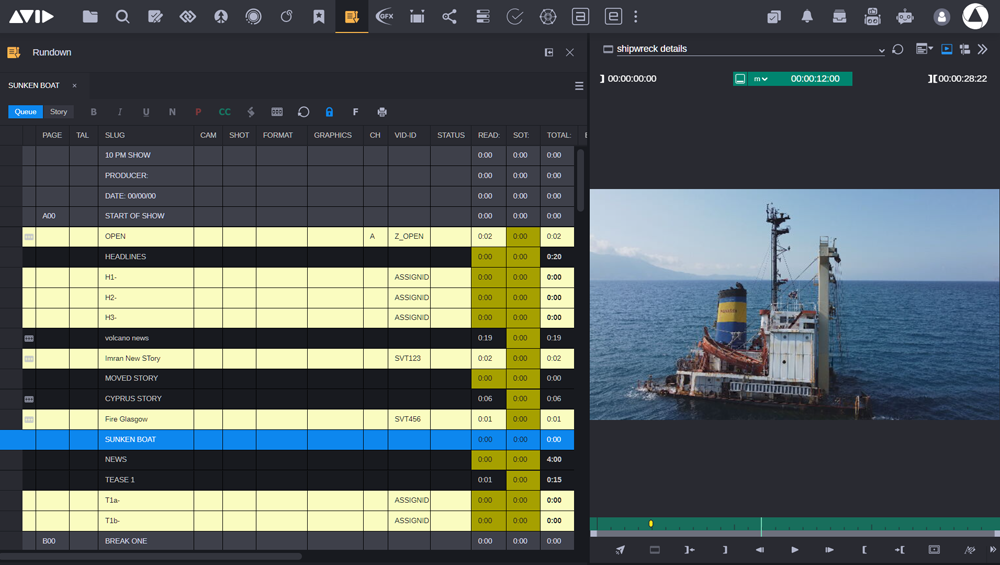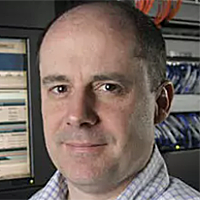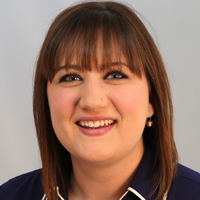
Newsroom Computer Systems Lurch Into A New Era

Newsroom computer systems (NRCS) have long served as the linchpin of broadcasters’ news operations, and as such they have been slow to change compared to other pieces of technology in a television plant. With the systems being used to produce scripts and rundowns for hours of live programming each day, the difficulty of updating or replacing NRCS software — and training journalists and producers to use it — has kept many stations and networks wedded to the same NRCS for decades.
NRCS vendors have generally limited themselves to incremental upgrades, though over the past five years there has been a concerted effort to make systems more “story-centric” to better support multiplatform workflows.
The pace of change for the venerable NRCS is picking up, however, driven by industry consolidation, shifting viewing habits and the rise of new technologies like the cloud and AI. Major station groups like Nexstar and Gray have changed NRCS platforms across multiple stations in an effort to standardize technology. Others, like Sinclair, are eyeing a complete transformation of their news production workflows, including the NRCS, as they embrace public cloud technology. Vendors are updating their software to integrate the NRCS more tightly with digital production tools and make it more accessible from mobile devices, while also exploring how AI can reduce the ever-growing workload faced by today’s multiplatform journalists.
A chaotic newsroom of journalists racing to meet the needs of a demanding audience is nothing new, says Dalet co-founder and principal Stephane Guez. But he says news organizations today are going through “multiple layers of disruption,” including both financial pressures and technology changes, that have made the job much harder.
“Newsrooms have never been quiet and orderly,” Guez notes. “But there is more intensity, more information sources to monitor, more volume, a faster pace, nonstop news cycles, and maybe surprisingly, always more complexity: more restrictions, licensing, fact-checking, and in fact more decisions to make all the time about what to cover, especially at a time when anything can be seen as newsworthy.”
Dalet, whose story-centric NRCS is used by the NBC Universal-owned stations, the ABC O&Os and Fox News, visited this year’s NAB Show to demonstrate various web-based tools that connect to today’s “virtual newsroom” of distributed staffers, including browser-based editing and remote contribution. The company also showed several AI integrations including automatic translation of captions and graphics and script generation from wire feeds.
Moving To Common Ground
In 2023, both Nexstar Media Group and Gray Television switched a number of stations from Avid’s legacy iNews NRCS product to AP’s ENPS as part of group-wide standardizations.
Nexstar converted 32 stations to ENPS in 2023, including a number of former Tribune stations, and now all of its roughly 115 news-producing stations use the system. Blake Russell, EVP of station operations and content development for Nexstar, says collapsing to one platform made Nexstar’s internal structure easier to manage.

Blake Russell, Nexstar
Another motivation was that Avid was no longer upgrading the standalone iNews, which was replaced by a newer product called MediaCentral Newsroom Management that is part of the broader MediaCentral content management system. He wasn’t interested in investing in the newer Avid product as he felt he would be paying for extra functionality Nexstar didn’t need. Meanwhile, he was happy with AP’s continued upgrades to the ENPS system, with which Nexstar has done some internal integrations in order to share content between stations as well as its NewsNation cable network.
“They continue to invest in it, and we’re doing some stuff behind the scenes to tie that product into some other products, and it makes it easier just to centralize on one product when you’re trying to tie a newsroom computer system into something else,” Russell says. “The fewer vendors that you have, the less you have to worry about breaking something when somebody decides to do an upgrade or a change.”
Gray Television took most of three years to convert over 20 stations from iNews to ENPS, a process it completed last year. The switch was a result of Gray’s string of big acquisitions which included Raycom Media, Quincy and Meredith. Raycom was all-ENPS, and after Gray bought it converted its few iNews stations to ENPS. The Quincy and Meredith stations that were subsequently acquired also used iNews, and they were also converted to ENPS.
“We considered everything, and we talked to all of our stations that were on different platforms to get their opinion of the platform and what they wanted to do,” says Clint Moore, director of broadcast operations, Gray Television. “At the end of day, the majority of company was already AP, so it just made sense for that platform to be standard across the group.”

Clint Moore, Gray Television
One of the benefits of having a standard NRCS across Gray is that it makes it easier for personnel to move between different stations, whether it’s a reporter moving up from a small market to a big market or a big-market producer going to a small-market station to become a news director. Gray also has an executive news training team that handles training across the group, and having a common platform makes their jobs easier.
Moore says that Gray has a tight relationship with AP as a vendor and has a monthly meeting with its executives to discuss future ENPS upgrades. Like Nexstar, Gray currently runs ENPS on on-premise servers. Moore is interested in ENPS’ efforts to bring its technology to the public cloud but expects Gray will be operating ENPS in on-premise, or perhaps hybrid mode, for the foreseeable future.
“There are some opportunities there to maybe connect our stations together through ENPS with some kind of cloud-based server, maybe some kind of cloud-based planner so everybody in the group has access to it,” he says. “We’re starting to look at hosting some of our ENPS servers in the cloud. Maybe not all of our servers, but the primary is on-prem and the backup is in the cloud, that type of stuff. Any of that cloud-based stuff is interesting because it helps us out when it comes to upgrades, and it helps us out when it comes to redundancy.”
Gray currently has one station that uses AP’s Playbook planning system and several others are interested in it. That is something Moore will explore down the road after he completes more pressing integration projects with the Quincy and Meredith stations.
Gray has a planning and collaboration solution it built internally that provides access to scripts and rundowns across the group, but Moore is open to a vendor providing the same functionality.
“Homegrown solutions are always a great idea, but the more homegrown solutions you have the more you have to support,” he says. “And if you have a small team to support that along with everything else you’re doing, that can be an issue sometimes.”
At NAB, AP unveiled a significant enhancement to its story-centric production tools with “AP Storytelling,” a companion software product to ENPS and Playbook that is designed to make multiplatform production easier. The browser-based platform, which should be commercially released later this year, integrates different broadcast and digital workflows in a single location and adds AI capabilities such as “summaritive AI” tools that can take a web story and reformat it for broadcast use. The AI can also look at a story and suggest additional content to the users either from AP Photos or Videos or AP Newsroom.

AP Storytelling’s AI tools will suggest relevant video based on a broadcast script.
“It’s enhancing those planning story-centric workflows to now start to introduce production-style workflows where you can write your story for your broadcast, your website, your social platforms, your newsletter, all within the same system but also combined with all the planning you’ve also done around that topic as well,” says Brian Doyle, director of product management, AP.

Brian Hopman, AP
AP Storytelling is not a replacement for content management systems (CMS) like WordPress or Joomla that stations currently use to publish their digital content, says Brian Hopman, VP and GM of ENPS for AP. But it provides a tight integration between the NRCS and the CMS and can publish to the CMS as a destination.
“Fundamentally we think that the first step to having those things play nicely together is having your people create all of their content, regardless of output platform, from a single place,” Hopman says. “And we knew that single place could never be a rundown. No one’s ever going to actually manage their website from a rundown. So, this changes that way of working, by giving you a single place to get started on your content with plans and then with creating it in a way that’s platform-agnostic.”
Pursuing Transformation At Sinclair
Sinclair is currently evaluating newsroom systems as part of its “Content Center Transformation,” an ambitious project to completely overhaul its news production for all platforms to cloud-based systems wherever possible. Sinclair currently uses iNews across its stations, as part of a groundbreaking 10-year deal with Avid for enterprise-wide news production tools that runs through the end of 2025.
Sinclair is examining every part of its news production process, from acquisition at the camera lens to playout from its control rooms and seeing where it can use the cloud to create greater efficiency. For example, it has been working with Sony, Avid and Marquis to develop a system that can bring camera metadata back to the station’s production system the instant live video is captured. It has also been testing cloud-based switching.

Ernie Ensign, Sinclair
“We have 65 news-producing stations today,” says Ernie Ensign, AVP, news technology & operations, Sinclair. “To leverage all that content, we have to optimize and maximize our workflows as far as being able to search and discover content, quickly create whatever versions for whatever platforms, and be able to quickly distribute it. So, we’re looking at a transformation of the whole process, not just one component of it. Hopefully we get there.”
Unlike Russell, Ensign isn’t looking for a standalone NRCS. So, he doesn’t have a problem with Avid’s strategy of offering NRCS functionality (through MediaCentral Newsroom Management) as just one component of the MediaCentral Cloud UX, a range of products that Avid sells on a subscription basis including the “Collaborate” story-centric production tool.
What he is concerned about is that the rundown tool Sinclair uses today is still based on 20-year-old technology, running on a Linux server, and he doesn’t yet have a clear idea of how Avid is going to implement that functionality in the cloud. He says that while Sinclair currently uses all components of the “Cloud UX” product family for its day-to-day news production, they all run today on on-premise virtual machines (VMs), not cloud compute.
“There are still some challenges there with Avid with a true cloud-native solution,” Ensign says. “They’re moving that direction, but I don’t believe they are fully there yet. We have a little bit of runway, because our agreement is not up until the end of 2025. We are putting together the requirements, and we are doing our due diligence, to make sure that everything we do is fully cloud-native and not a lift and shift. The last discussions we had with Avid there are still some components there, iNews included, that would be a lift-and-shift implementation.”
In addition to Avid, Ensign also has his eyes on newer vendors like Norway-based Fonn Group, which he says has a NRCS product, Dina, which is a “fully serverless, cloud-native implementation.” He is also paying attention to the cloud development underway at AP, Dalet, Ross Video and Czech firm Octopus.

Craig Wilson, Avid
Craig Wilson, broadcast & media product evangelist for Avid, says that iNews is not being discontinued and that Avid will continue to support it as a standalone product for existing customers (though a look at Avid’s website indicates that support for all NRCS’s bought with a perpetual software license, including MediaCentral Newsroom Management, terminates by Dec. 31, 2025). Wilson says there has been some confusion among customers since Avid rebranded various products under the MediaCentral banner back in 2017, including iNews and the Interplay production asset management system and Interplay media asset management system.
“What that has prompted is for some of our competitors to try to play it in the market that iNews is being discontinued, but that’s not the case at all,” Wilson says. “MediaCentral Newsroom Management is widely deployed in hundreds of newsrooms globally, it’s a fundamental part of people’s broadcast workflows supporting daily shows in lots and lots of different locations. The wider point is that is only one element of what our newsroom solution is, but linear TV is still a really important market for lots and lots of people.”
Wilson says that while Cloud UX is “cloud-enabled,” most deployments of the Cloud UX technology stack run on on-premise compute today, not public cloud platforms like AWS, Google Cloud or Microsoft Azure. He expects that will likely continue, with most customers pursuing hybrid environments that mix on-premise and cloud compute.
“Specifically on the rundown part, we still see a large component of people wanting to continue to run that on prem,” Wilson says. “But we are investigating ways that it could run in the cloud.”
Wilson concedes Ensign’s point that Avid’s early work on bringing the NRCS rundown to the cloud still represents a lift-and-shift strategy. He says that Avid is working toward truly cloud-native applications, but doesn’t have a timeline for when that development work will be complete.
“Directionally, what we’ve seen is that people want to move away from lift and shift, and they want to run things more efficiently and effectively in the cloud,” Wilson says. “And by making it applications that are cloud-native, that’s where we want to get to.”
Bringing The Newsroom To The Field
One of the core goals that Ensign has identified for Sinclair’s “Content Center Transformation” is to “extend the newsroom out into the field” by making the NRCS and other production tools easily accessible on a smartphone or tablet. Several vendors have updated their systems to do just that.
Ross Video has made two updates to the mobile app for its Inception NRCS in just the last year, says Jenn Jarvis, solutions manager – production workflow, Ross Video. While Inception has always been browser-based and theoretically accessible from any broadband-connected device, there is a new emphasis on being able to do more with the smartphone in a journalists’ hand. The Inception app now affords journalists access to all of the planning and messaging tools in the NRCS, gives them visibility to rundowns, and allows them to write their script from start to finish without having to transition to a web client.
“I think the biggest reason that mobile has become so important is just because of the amount of content we’re expected to produce and the speed at which we have to produce that content,” Jarvis says.
Another vendor that has greatly improved the accessibility of its NRCS is Octopus, still a relatively new player in the U.S. newsroom market. While Octopus continues to offer a Java-based desktop system that runs on a LAN, with the 12th iteration of its story-centric software Octopus has introduced a web-based client that can be easily run on a laptop, tablet or smartphone.

Scott Fitzgerald, Octopus
“It’s a choice of where they want their newsroom system to be,” says Scott Fitzgerald, national sales director for North America, Octopus.
Octopus has about 15 customers in the U.S., including a few smaller call-letter stations and some regional sports networks. While Octopus has MOS support that allows it to easily integrate with existing gear at legacy stations, Fitzgerald is seeing the most interest from companies that are building new facilities. As a smaller company, Octopus is very competitive on price and prides itself on the amount of software customization it will perform for customers, he adds.
“The new guys are always talking about they don’t want to be rundown-driven, they want to be story-driven, because it’s going to go a million different places,” Fitzgerald says. “And ours can do either way. We can be rundown-driven for a traditional TV station, or we can be story-driven if you’re talking about publishing or a content creator.”
HBCU Gameday, which produces HBCU-themed cultural programming for cable network Aspire TV and a bevy of sports-related digital content for its website and social media partners, has been using Octopus for about a year. It has integrated it with Cuescript prompter software and a Playbox Neo playout server to produce its 30-minute weekly shows for Aspire TV, as well as shorter-form content.
“It was a really great integration,” says Tolly Carr, managing partner for HBCU Gameday. “They had their technical people come and spend a week with us, and that was really the point where they were able to do the coding on their end to really customize the interface and capabilities for what you needed.
“It allows us to integrate all those systems together in the same place, time out our content, have the script there from prompter and load up our video content and have that all lined up,” Carr says. “It makes the job so much easier for the producer, director and talent to all be operating from the same interface, and all on the same page as we deliver our content.”

























Comments (0)